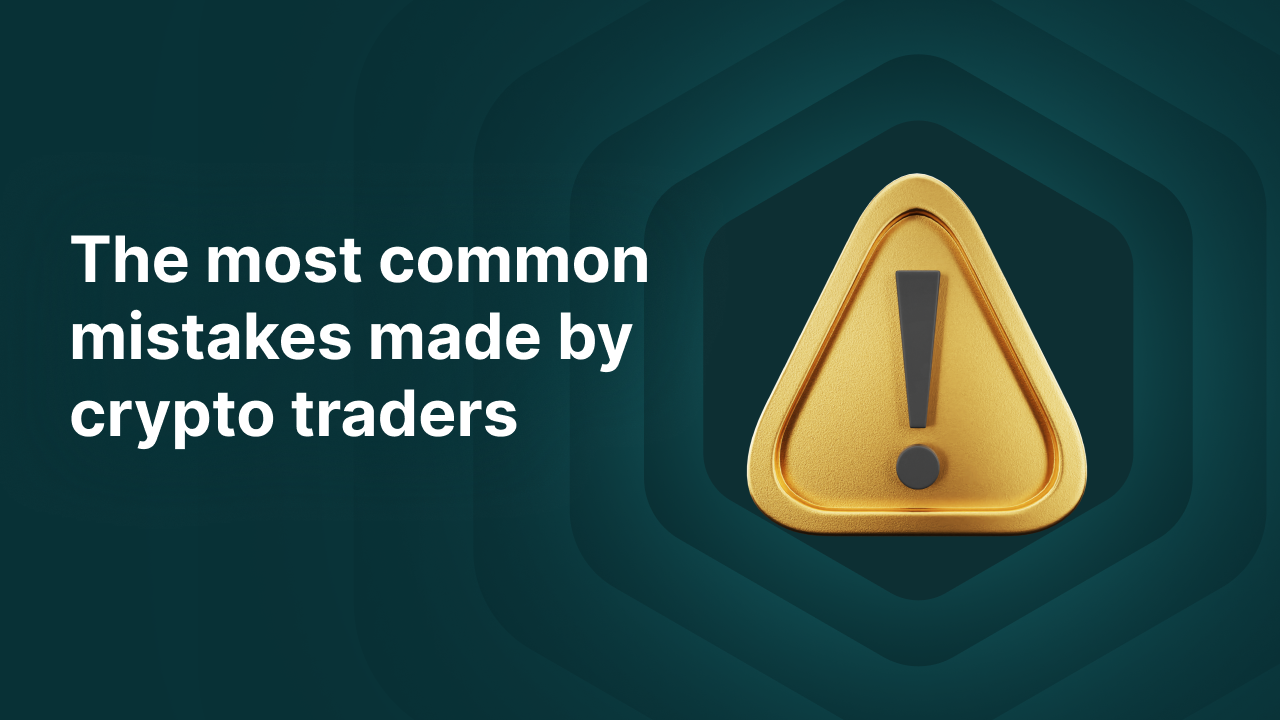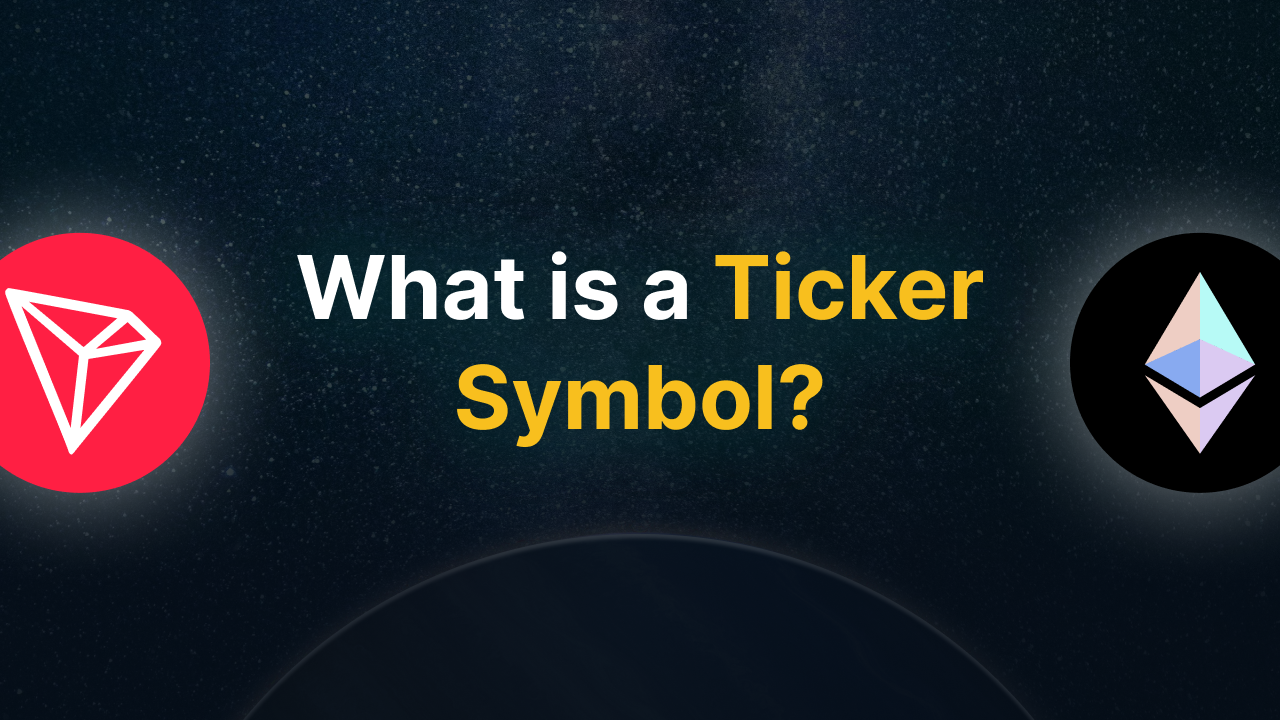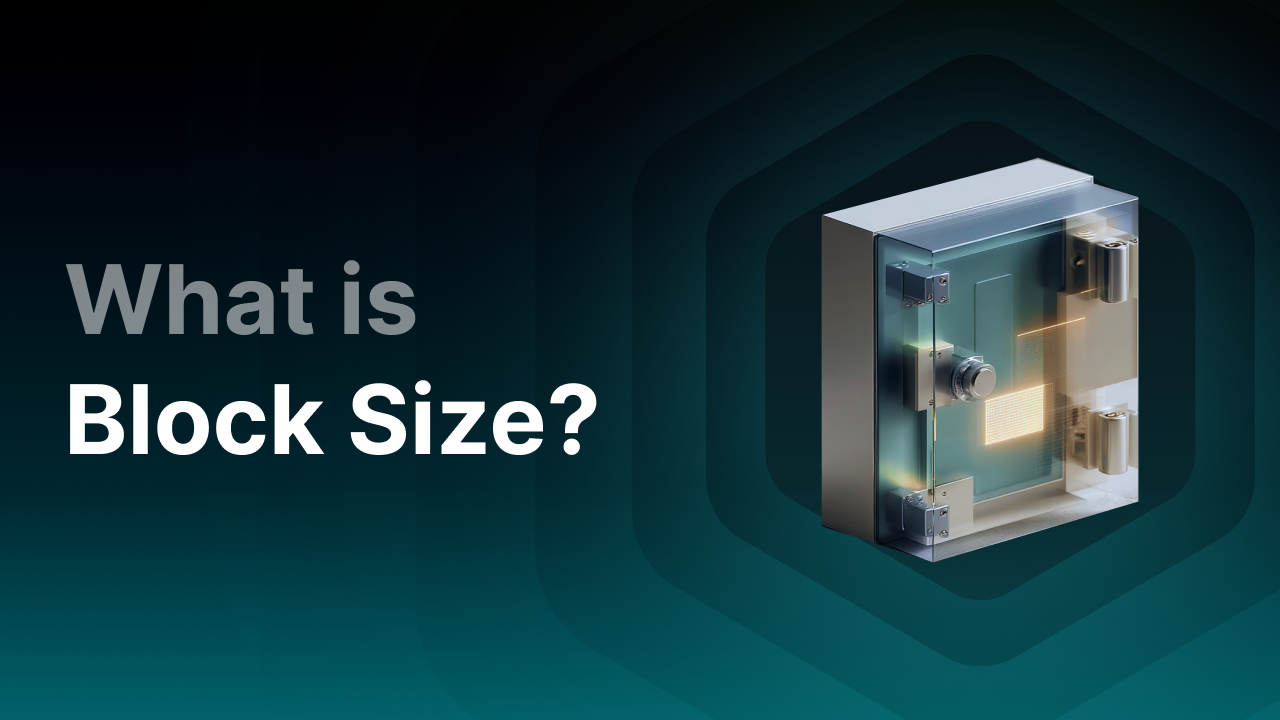The most common mistakes made by crypto traders

The crypto market is tied together by bad choices and mistakes made by crypto traders. It’s very simple: if someone makes money with crypto, then someone else is losing money. Because as soon as someone sells at a profit, the price drops and there’s always someone who happened to buy at that exact moment. What usually happens then? The investor panics, makes an emotional decision, and sells their crypto at a loss. Does this sound familiar?
This is just one of many examples of mistakes that every investor has made at some point. In this article we’ll go over the most common mistakes and how you can avoid them.
Key Takeaways
-
Always do your own research (DYOR) and don’t invest blindly because of FOMO, hype, or stories from others, but dive into the technology, whitepaper, team, and tokenomics.
-
Diversify your risks and never put all your money into one coin or sector. Build a balanced portfolio with large, mid-size, and possibly small projects.
-
Control your emotions and maintain discipline by working with a plan and setting realistic goals.
-
Only invest money you can afford to lose and choose safe wallets/exchanges while handling your seed phrase carefully.
-
Decide beforehand when to take profits or cut losses, so you don’t end up stuck during a bear market and/or watch your gains evaporate.
Beginner mistakes when trading crypto
As a beginner investor, there are many rookie mistakes you can make when you start trading crypto with little knowledge of the market. You can learn the hard way by trial and error, or you can know the mistakes in advance and use that to your advantage.
1. Jumping in too quickly without research
A big mistake many beginner investors make is starting to invest because of FOMO (Fear Of Missing Out). They invest blindly, without knowing anything about the cryptocurrency. They invest without doing any research.
This happens when investors see the price going up and think: "I need to get in, otherwise I’ll miss the boat."
It can also happen when they start investing in a crypto because they hear that a friend, family member, or colleague made a lot of money with it. Or maybe an influencer is promoting a certain crypto.
The big problem here: you don’t know what you’re investing in, and there’s a chance that early investors will start taking profits, causing the price to drop again. You end up buying when the price is at or near the top.
How to avoid this:
-
Never buy just because “everyone” is doing it.
-
Research the cryptocurrency itself. Are the founders known? What problem does the crypto (and the underlying blockchain) solve and how do they do it? What’s in the whitepaper? Do they have a roadmap and is it reasonable and achievable?
-
Also check if the price increase is backed by real adoption or only by hype.
2. Investing in only 1 crypto
A mistake investors can make is putting all their capital into just one cryptocurrency, especially a small altcoin or even a memecoin. They read online or hear from friends that this could be the next Bitcoin.
It could be the best decision of your life, but in most cases it’s too good to be true. Betting on one horse is very risky, because if your chosen crypto drops, you lose money. On top of that, smaller cryptos are more volatile and can fall much harder than large, established cryptocurrencies, especially during bear markets (altcoins can drop more than 90%).
Crypto is extremely volatile. One bad news story can cut the price of a coin in half within hours.
How to avoid this:
Build a well-balanced crypto portfolio. This helps you spread the risks and gives you the chance to benefit from price increases of different cryptocurrencies. Spread your investment across multiple cryptocurrencies and/or sectors:
-
Large and more stable cryptocurrencies such as BTC and ETH.
-
Mid-size projects with growth potential, such as Solana, Tron, and Cardano.
-
Small and speculative projects (note: high risk).
TL;DR: Never invest more than you’re willing to lose. Predicting the market remains extremely difficult, even for experienced and seasoned investors.
3. Too little knowledge about blockchain and technology
As a beginner investor, you often don’t know the market and the underlying technology very well. This is not unusual. Understanding the technology isn’t something you do in 2 minutes; you really need to dive in. And even when you do, you constantly run into new terms. This is also because blockchain technology keeps evolving.
This brings new opportunities, but it can also cause a lot of confusion. Where should you invest? In the latest innovation, or in the trusted existing blockchains?
Many beginners also often buy crypto without understanding the technology behind it. They gamble that the technology is reliable and adds value. But minimal knowledge is required to make rational choices.
What you should at least know:
-
Coin vs. token: Coins have their own blockchain. Tokens run on another blockchain (for example ERC-20 tokens on Ethereum). A coin such as ETH, BTC, and SOL is very important for the blockchain, because they have a real function within the network. Tokens launched on a blockchain get their value elsewhere. So make sure you research what they add to the ecosystem.
-
Tokenomics: The tokenomics of a cryptocurrency are also very important. How many tokens exist and how many can eventually be released? Is the token inflationary or deflationary (for example thanks to a burn mechanism)? How is the distribution of tokens? If most of the tokens are in the hands of a small number of wallets, this could mean they have a lot of influence on the price trend. Is this the team behind the project? If so, what are they doing with the tokens? Are they using them for marketing, to burn, or are they planning to dump them on the market at some point?
-
Consensus mechanisms: Blockchains function based on consensus mechanisms. These ensure that a blockchain can operate in a decentralized way and that transactions can be executed. Know the underlying consensus mechanisms, such as Proof-of-Work (PoW), Proof-of-History (PoH), and Proof-of-Stake (PoS). This way you not only learn more about the mechanism but also what you can do with the coins.
4. Not having patience
Every crypto investor knows the feeling. You invest enthusiastically in a cryptocurrency and expect that after you buy, the price will skyrocket. You check the price development of that cryptocurrency daily, sometimes even multiple times a day.
Basically, you expect the crypto to make you a millionaire in a short time. Phrases like "When Lambo?" run through your head. But this rarely happens. Unless you are a day trader, you need to hold your crypto longer. Crypto prices never rise in a straight line. On top of that, market sentiment is very important. Which cycle is the market in? Are we in a bull or bear market? Which external developments boost the crypto market, or not? These are all factors that influence the price development of your crypto.
Patience is therefore essential! In addition, the timing of your investment is very important, as well as investing with a plan. Otherwise, you make decisions purely based on emotions and a lack of discipline.
5. Not having discipline
Do you have a goal when you start investing? If yes, is it realistic? Many people actually don’t know what their goal is. Some might say: to make a lot of money. But what is “a lot”? Or: I want to make at least €1,000. But how do you know if that’s realistic? And what will you do if the market drops 30%? Will you sell out of frustration, or will you hold on?
Having discipline, together with a clear and realistic plan, is therefore very important when investing in crypto. Especially if you’re a beginner who doesn’t know the market well yet. The market can be very nerve-racking.
That’s why you should read up well on which strategies exist and which suit you. Then execute this plan and stick to it. This prevents panic buying or selling and helps you move forward in this exciting but impressive market.
6. Investing money you actually can’t afford to lose
This may sound cliché, but it happens often: investing more than you can actually afford to lose. The crypto market is very volatile and therefore very risky. Many people still invest money that they actually need. Think of savings meant to cover unforeseen expenses, or worse: borrowing money to buy crypto. This can cause you to end up in deeper debt, which is exactly what you don’t want. Especially when you suffer heavy losses. So only invest what you’re willing to lose!
7. Swapping, swapping, and swapping again
Every investor has experienced it. You keep track of prices all day and see some coins rising, while your crypto lags behind. You swap your crypto for the other one and of course pay a fee. You buy after the increase, causing your new cryptocurrency to stop moving up. Annoyed, you swap again for the coin you had, or for another one. Once again, you pay a fee. Slowly you see the value of your crypto decreasing.
So never invest out of FOMO! After all, you invested in your crypto for a reason in the first place. Don’t swap it just like that, unless you have a good reason.
8. You wait too long to sell
You invested in crypto with a lot of hope, but you don’t have a clear exit plan. You don’t recognize the market cycles and don’t realize that the market has entered a bear market. You’re at a loss and think: I’ll wait until the value reaches X. The reality is that cryptocurrencies can drop by more than 95% during a bear market. Try earning that back…
Sometimes it’s wiser to accept your loss, no matter how hard it is.
Loss of crypto
As a crypto investor, you must be very conscious of where you store your crypto and its security. You need to be aware of the risks to avoid losing your crypto (sometimes in a very silly way).
Do you choose to store your crypto at a centralized crypto platform? Or do you prefer to keep it yourself in a decentralized wallet, such as a software or hardware wallet? In both cases, there are things you need to pay attention to in order to avoid losing your crypto.
Decentralized wallets
When you store crypto in an external wallet, such as a software or hardware wallet, you get a private key, public key, and seed phrase linked to your wallet. Management and therefore security lies entirely with you.
Losing access to your wallet and the risk of someone else gaining access to your crypto are the two biggest mistakes often made:
-
Storing your private key and seed phrase:
Your private key or seed phrase is literally the key to your crypto. If someone else has it, they can empty your wallet. Since no one else is responsible but you, your crypto is gone. Common mistakes are storing the seed phrase and/or private key in a Word document on your computer, or taking a picture that remains on your phone. If someone gains access to your laptop or phone, they can also access your crypto.What can you do? Store your seed phrase and/or private key offline. Write it down on paper and ideally keep it in a safe.
-
Forgotten codes or lost access:
Losing important codes such as passwords and seed phrases is a common mistake. Also, losing access because you can no longer use your device happens. The most famous example is James Howell. In 2013, he lost 7,000 BTC because he threw away the hard drive containing the Bitcoin. Back then, it was worth $140,000, now worth hundreds of millions.What can you do? Make multiple backups of your seed phrase and store them in multiple, safe locations. Preferably physically, for example in a safe at home and in an external safe.
Centralized exchanges
Storing crypto at centralized exchanges also carries risks. Many exchanges have collapsed due to major hacks (such as Mt. Gox) or due to mismanagement by executives (such as FTX). In both cases, investors lost their crypto. Choosing a reliable party is therefore very important.
Questions to ask yourself:
- How do they handle your funds?
- What security measures do they take?
- Do they store your funds in cold storage (hardware wallets)?
- What licenses do they have and do they comply with regulations?
Answer these questions for yourself when choosing a reliable party.
How about Finst?
Finst handles your funds with the utmost care. Client funds are separated from company assets and largely secured via MPC technology with hardware isolation. This is an advanced form of storage that offers protection against hackers. For fiat money, a 1-to-1 segregation structure applies via the regulated Dutch bank Bunq. Only a limited portion of the crypto is held in hot wallets to allow fast transactions.
In addition, Finst has an independent Proof of Reserves report, carried out by Audit Now. This proves that all client funds are fully backed 1-to-1 and safely stored.
Finst B.V. is authorized as a provider of crypto asset services by the Dutch Authority for the Financial Markets (AFM) under number 41000015. This means Finst fully complies with the European AMLD5 directive and Dutch legislation.
Falling for scams
Unfortunately, the crypto world is also a breeding ground for scammers. Because transactions are often irreversible, losses can be permanent once you fall for them. That’s why it’s crucial to recognize the most common scams and know how to protect yourself.
Common scams:
-
Phishing: Through fake websites, fraudulent emails, or social media messages, scammers try to steal your login details or seed phrase. These sites or emails often look almost identical to those of legitimate companies.
-
Pump-and-dump: Groups try to artificially pump up the price of an unknown or small coin. Once the price rises, they dump their coins on the market, causing the price to crash and leaving latecomers with losses.
-
Rug pull: Developers of a new project suddenly pull all liquidity from their own coin or DeFi project and disappear with the money. This often happens with tokens that lack transparency or reputation.
-
Social engineering: Scammers pose as support staff or “crypto gurus” and ask you for sensitive information or a small “test transaction.” This often happens via Telegram, Discord, or Twitter.
-
Giveaway scams: Scammers promise you’ll get back a larger amount of crypto if you first send a smaller one (“Send 1 ETH and receive 2 ETH back”). Once you pay, you never hear from them again.
What you can do:
- Always check the URL before logging in or making transactions.
- Never share your seed phrase or private key, a legitimate company will never ask for it.
- Research the team and tokenomics of a project before investing.
- Be skeptical of promises of guaranteed profits or “too good to be true” claims.
- Only use reliable platforms regulated by recognized authorities.
Investing in the wrong (new) cryptocurrencies
It sounds appealing: getting in first, or very early, on a new cryptocurrency. You’re in early and could potentially make big profits. But with thousands of new cryptocurrencies launching every day—many of which are scams or fail quickly—it’s very difficult to find that hidden gem. Without doing thorough analysis (unless you’re very lucky), it’s usually just gambling. Many new projects disappear as quickly as they appear.
Early adopter trap
Getting in early may sound attractive. But never forget that you’re putting money into a cryptocurrency that hasn’t proven itself. Without a clear use case or a reliable development team, you run a big risk of your investment becoming worthless. That’s why it’s important to research before investing. Many investors make the mistake of doing little or no research into a new coin. They hope to get lucky or rely too much on what others say.
Meme coins and hype tokens
Most meme coins and hype-based cryptocurrencies live and die by creating momentum. They have no real function and are made simply because it’s possible—or because developers want to make money, whether in good or bad faith. Unfortunately, the latter is often the case. With meme coins, rug pulls are very common, as well as organized pump-and-dump schemes. It’s not surprising that more than 99% of these memecoins disappear quickly. That’s why they’re also called “shitcoins.”
Still, there are success stories, such as Shiba Inu, Pepe, and Dogecoin, where early investors made a lot of money. Despite this, many investors become victims of rug pulls and pump-and-dump schemes when investing in shitcoins. Be aware of this!
Evaluating projects
So how do you avoid these mistakes? You can never guarantee that you’re investing in the right crypto. What you can do is invest deliberately by doing solid research to minimize risks. Consider the following:
- Critically read the whitepaper. Is the plan realistic and do they really solve a problem? And how do they intend to solve it?
- Check the community and social media activity. Is there genuine engagement or just hype? Is the community made up of developers and people who believe in the project, or just people shouting “When lambo”?
- Research the founders. Do the developers have experience in crypto and have they launched a project before? Are they known or do they prefer to stay anonymous?
- Look for audits. Have independent parties audited the project? What did they review during the audit—the code or the smart contract? And were any major vulnerabilities found?
- Examine the token distribution. Is most of it in the hands of a small number of wallets? Is it mainly held by the developers? And what do the developers use the tokens for?
Not having an exit plan
Investing in crypto is one thing, but if you don’t know when you’re going to exit, it’s pointless. This may be the most common mistake. Unless you’re a HODL-er, having a crypto exit strategy is crucial, otherwise you may hold crypto too long and never realize profits.
Investing in crypto is a combination of emotion and trust. When you get too greedy, you don’t sell, and your profits can vanish. Struggling to take profits is a common mistake many never learn from.
Investors tell themselves the price will go higher and that they can always sell later. In reality, this often doesn’t happen, because you don’t sell at the top and then the market shifts into a bear market. Instead of profits, you’re left with heavy losses. You either take your loss or wait for the next bull run—which doesn’t guarantee you’ll make a profit.
This could have been avoided with a clear exit plan and clear goals.
Trading with leverage
Trading with leverage can make you big profits in a short time, but also huge losses. Essentially, leverage trading is speculating on price movements with money you don’t actually own. You can go short (expecting the price to drop) or long (expecting the price to rise), for example with a factor of 10.
Example: You go long with €100 in Bitcoin with a leverage of 10. In practice, you open a position of €1,000. The price movement also works with a factor of 10. If the price rises by 10%, you make 100% profit. But if the price drops by 10%, you lose 100%. You lose your entire investment.
This is very risky, especially for inexperienced investors. Even for people who know the market well, predicting short-term price movements is very difficult. The higher the leverage, the higher the risk.
Do you still want to try? Then only use a small part of your portfolio, like 5%.
How can you avoid mistakes?
After reading this article, you now have a clear picture of the biggest mistakes in crypto and how to avoid them. Here’s a summary of how to prevent them:
- Jumping in too quickly without research → Always do your own research (whitepaper, team, use case) and don’t fall for FOMO.
- Investing in only one crypto → Diversify your portfolio across multiple coins and sectors.
- Too little knowledge about blockchain and technology → Learn the basics: coins vs. tokens, tokenomics, consensus mechanisms. The Finst academy is perfect for this.
- Not having patience → Understand market cycles (bull/bear) and stick to a long-term plan.
- Not having discipline → Set clear goals and stick to your strategy regardless of emotions.
- Investing money you can’t afford to lose → Only invest money you’re fully willing to lose.
- Swapping out of frustration/FOMO → Don’t trade impulsively, stick to your original plan.
- Unsafe storage of crypto → Store your keys offline (hardware wallet, paper backup) and choose reliable exchanges.
- Falling for scams → Watch out for phishing, rug pulls, and “too good to be true” deals.
- Investing in the wrong (new) cryptos → Always research team, community, audits, and tokenomics.
- Not having an exit plan → Plan in advance when to take profits and stick to take-profit and DCA-out strategies.
Final thoughts
Investing in crypto can be very rewarding, but it’s also a market full of risks and pitfalls. Beginners often make the same mistakes: investing without research, going all-in on one coin, trading emotionally or without a plan, and storing their crypto unsafely. By educating yourself, following a strategy, and keeping your emotions under control, you significantly increase your chances of success. Don’t see crypto as a get-rich-quick scheme, but as a long-term investment where knowledge, patience, and discipline make the difference.




